In my last post (Part 1), I talked about the “primitive roadside campsites” in Big Bend National Park that are (mostly) along the paved park roads. Today, I’d like to continue this discussion of “primitive roadside campsites” by talking about the campsites along dirt roads in the southern end of the park. In the next post, I’ll talk about the dirt roads in the northern/western part of the park. The roads in this post are quite primitive, and all require high clearance. Several require or strongly recommend 4×4. (Part 3 can be accessed here.)
To camp in these backcountry campsites, you will need to get a permit at the visitor center’s backcountry office. Permits are $10 (5/10), and can include up to 14 nights per permit. Campsites cannot be reserved; however, you can get your permit 24 hours in advance if you wish. All permits must be gotten in person, and cannot be gotten over the telephone. The process can be sped up if you fill out the Backcountry Planning Worksheet (http://www.nps.gov/bibe/planyourvisit/upload/BC_worksheet.pdf) before you go to get your permit. While getting the permit, you will decide what campsites you want which nights, and the ranger will enter this into their records so that they won’t have two people in the same campsite on the same night. Also, if you don’t turn in your permit at the end of your stay, they can go looking for you in the area that you were camping in. They may or may not do this, so don’t believe that if you don’t show up on time they’ll miraculously come rescue you: this is not a safeguard against common sense! Each night that is on your permit, you can sleep in the site written on the permit. We’ve never been “checked on”, but it would be a good thing to have your permit handy if a park ranger should come along.
Here are descriptions of the campsites along the primitive dirt roads in the southern part of the park (River Road, Black Gap Road, Glenn Springs Road, and Juniper Canyon Road):
Primitive Dirt Roads (South)
These are primitive dirt roads that require high clearance, or even 4×4, to access. These roads typically have several campsites along them, depending on the length of the road. My favorite is the River Road, a rough, high-clearance gravel/dirt road (impassable when wet) that follows the Rio Grande and the Mexican Boarder. The scenery is beautiful in this area, and to wake up with the sun and see it coming up with the Rio Grande or the Chisos Mountains right nearby; well, that’s an experience I won’t soon forget!
The River Road
There are a total of 29 campsites on the River Road. Many of the campsites are located along the road itself, while others have short (or long) access roads to them. Some can be accessed by high- or even low-clearance vehicles, while others require 4×4 just to reach the campsite. Be prepared for any road conditions here. I’ll start with the campsites on the east end of the road (River Road East) and work my way west towards Castolon.
Gravel Pit (River Road East)
The Gravel Pit has four campsites; GP-1, GP-2, GP-3, and GP-4. They are located 1.8 miles down the River Road from the east junction with the main park road. There is a 1.4-mile access road to get to the campsites.
La Clocha (River Road East)
The two La Clocha campsites (LC-1 and LC-2) are located about 2.6 miles from the east end of the River Road. The access road is 0.7 miles long, and both campsites are at the end of the road.
Solis (River Road East)
Solis, located 13.7 miles down River Road East, has four campsites; SO-1, SO-2, SO-3, and SO-4. SO-1 and SO-2 are located along the 1.4-mile access road and can be accessed by a high-clearance vehicle, while SO-3 and SO-4 “require” 4×4 because of soft sand. We made it in our high-clearance van to SO-3, which, along with SO-4, is just about right on the Rio Grande. I forget exactly which campsite we were in (3 or 4) but whichever is on the right is the nicer of the two. These two are sand, and SO-4 has room to put up a tent. SO-1 and SO-2 are gravel. We were awakened in the morning by the farmer across the river singing to his animals. It was cool, but don’t get freaked out by it! We also did a little exploring in the area (the views are nice) and found that we could walk down the wash near the campsites and well out into the Rio Grande on the debris that had been washed down the wash. We said that we’d walked over half-way out across the river, so we’d been in Mexico!
Fesno (River Road East)
There is only one campsite here, FR-1, located along the River Road, 18.6 miles from the east end of the road. The site is gravel, but the great thing about this site is the views. You are not very high up, but you can see the Sierra del Carmen Mountains in Mexico, as well as the Mariscal Mine, a mercury mine that is still in fairly good condition. If you want early morning snapshots of the mine, this would be a great place to stay.
Talley (Middle of the River Road)
There are four campsites are in this area, TY-1, TY-2, TY-3, and TY-4. The Talley access road is 23.2 miles from the east end of the River Road; TY-1 is at this junction. TY-2 is 5.1 miles down the access road, while TY-3 and TY-4 are located 6 miles down the access road, at the end of the road and on the bank of the Rio Grande. TY-1 and TY-2 are gravel, while TY-3 and TY-4 are sandy, and are large enough for a tent. A hike starts in this area, so there may be day-hikers, but take your valuables with you, as this area is known for thefts.
Elephant Tusk (Black Gap Road/Middle of the River Road)
The Elephant Tusk campsite (EL-1) is located three miles up the Black Gap Road. The turnoff for the Black Gap Road is 29.6 miles from the east end of the River Road. I have heard that the Black Gap Road is quite rough and is no longer maintained; however, I have never personally traveled it.
Please note that on the map the Black Gap Road comes before the Talley access road, so there may be some confusion about distances in this area.
Woodson’s (River Road West)
I have never seen such a nice campsite…or such a horrible access road! This was one of the nicest roadside campsites we ever had in Big Bend, but the road is nothing you’d want to try without both high clearance and 4×4. Granted, we did it in a high-clearance van, but I don’t think we’ll ever do it again. Two campsites, WO-1 and WO-2, are located at the end of the 3.8-mile access road, which has some sand, so use caution. The access road is located 27.7 miles from the east end of the River Road, or 26.3 miles from the west end. I would recommend WO-2, as it is a much nicer campsite over-all than WO-1 and is on the banks of the Rio Grande, with scrub trees around. There might be room for a tent, as long as it wasn’t too large. I have heard that this is a great fishing spot, but we only threw rocks into the river (children have this thing about doing that!). Unfortunately, Woodson’s campsites are closed due to flooding/washout and illegal activity.
Along the way to the Woodson’s campsites is a turn-off to Petite Overlook, a very nice viewpoint. Don’t miss this (if your car can make the way down the road): it’s really, really nice. You get to see the Rio Grande River spread out below you, as well as into Mexico (you’re basically on the border here). There is also a ruined house and an old rusty car near the viewpoint. I wonder…was that what happened to the last car that tried this road?!?!
Jewel’s Camp (River Road West)
There are two campsites here, JE-1 and JE-2, located at the end of a 3-mile access road. This access road is 29.4 miles from the east end of the River Road; 24.6 miles from the west end. 4×4 is recommended for accessing these sites, as the access road is quite rough.
Loop Camp (River Road West)
The Loop Camp sites (LP-1 and LP-2) are located at then end of a 3.5-mile access road, which is 31 miles from the east end of the River Road, and 23 miles from the west end of the road. The campsites are located near the Rio Grande; however, we never found a way to access the river.
Dominguez Trailhead (River Road West)
One campsite is located at the Dominguez Trailhead (DT-1). The site is along the River Road, 31.3 miles from the east end of the road, or 22.7 miles from the west end of the road. I have not used this campsite.
Please Note: The map shows the Dominguez Trailhead as east of Jewel’s Camp and Loop Camp; I do not remember which actually comes first.
Johnson Ranch (River Road West)
Supposedly, these two campsites (JR-1 and JR-2) are located near an old ranch that was owned by a family by the name of Johnson. A short access road, 0.3 miles, leads from the River Road to the campsites. The access road is 38.4 miles from the east end of the River Road, or 15.6 miles from the west end. There are some nice shade trees at this site, and there would probably be room for a small tent.
Gauging Station (River Road West)
One campsite (GA-1) is located down a 0.4-mile access road. The access road is 39.8 miles from the east end of the River Road, or 14.2 miles from the west end. I have heard that this is one of the shadiest sites along the River Road.
Black Dike (River Road West)
There is only one campsite at Black Dike (BD-1), located down a 1 mile access road, 43.3 miles from the east end of the River Road, and 10.7 miles from the west end. We have never stayed in this campsite.
Buenos Aires (River Road West)
This is the farthest west campsite on the River Road, only 4.4 miles from the west end (49.6 miles from the east end). The two campsites (BA-1 and BA-2) should be accessible by high clearance vehicles, though there is a 0.3 mile access road to the campsites.
Glenn Springs Road
The Glenn Springs Road has a total of 10 campsites along its length. The road begins 5 miles east of the Panther Junction Visitor Center, skirts the east side of the Chisos mountain range, and then heads south to link up with the River Road. It should not be attempted by a low-clearance vehicle, and 4×4 may be required, especially south of the Juniper Springs Road (5 miles down the Glen Springs Road), where it goes over solid bedrock.
Nugent Mountain (Glenn Springs Road)
There are two campsites at Nugent Mountain (NM-1 and NM-2), located just over a mile from the beginning of the road. A 0.25 mile access road leads to the two campsites. The sites are small and share a parking area.
Pine Canyon (Glenn Springs Road)
The road up to Pine Canyon begins 2.3 miles from the beginning of the Glenn Springs Road. Four sites are on this primitive road; PC-1 and PC-2 are 0.7 miles up the Pine Canyon Road, PC-3 is 2 miles up the road, and PC-4 is 3.75 miles up the road. The entire Pine Canyon Road is 4.2 miles in length.
Rice Tank (Glenn Springs Road)
The two campsites here (RT-1 and RT-2) are near an old earthen “tank” that was used in the 1920’s to water livestock. There is also an old livestock corral and loading chute nearby. The sites are located just over 4 miles down the Glenn Springs Road.
Glenn Springs (Glenn Springs Road)
Glenn Springs was once the site of a small town, located 8.8 miles down the Glenn Springs Road. However, it was attacked by Mexican raiders, and all that remains today are some old structures and a cemetery. There are two campsites in this area, GS-1 and GS-2. GS 2 is located directly on the Glen Springs Road, just beyond the historic structures. GS-1 can be found 0.2 miles down the unmaintained Black Gap Road. High clearance is required to get to both sites, 4×4 is likely necessary, especially on the Black Gap Road. The ½ mile before the town site is especially rough over solid bedrock.
Juniper Canyon Road
The rocky and rough Juniper Canyon Road is a side-road off of the Glenn Springs Road, 5 miles from its junction with the main park road. The Juniper Canyon Road usually requires 4×4, and should not be attempted without high clearance. Two camping areas are located along the road before its ends at the Juniper Canyon/Dodson trails junction.
Robber’s Roost (Juniper Canyon Road)
The one campsite, RR-1, is 2.6 miles up the Juniper Canyon Road. The site is named after Captain C.D. Wood, who owned the Glenn Springs wax factory, and who had a house nearby.
Twisted Shoe (Juniper Canyon Road)
One campsite (TS-1) is located near the end of the Juniper Canyon Road, 5.5 miles from its junction with the Glenn Springs Road. The road to the site requires high clearance, and 4×4 is highly recommended. In this area in 1787, an Apache chief known as “Twisted Shoe” led Apache warriors in a battle against Spanish soldiers; thus the name of the campsite.
Fees: $20 per vehicle to enter Big Bend National Park, valid 7 days. Big Bend Annual, Interagency, Golden Age (Senior), and Golden Access (Access) Passes are also accepted. There is also a $10 fee per primitive camping permit.
Road 




Signs 




Scenery 




Overall Rating: 




Go to Big Bend Backcountry Car Camping Part 1
Go to Big Bend Backcountry Car Camping Part 3
This Week’s Featured Product!
Tailor your trip to the seasons and your interest/activity level with this book. It’s more than just hikes and it also includes information to help your dream trip come true.


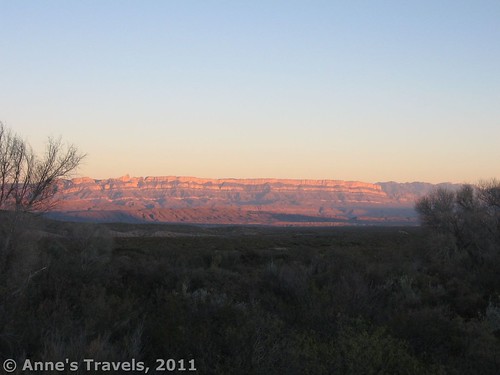
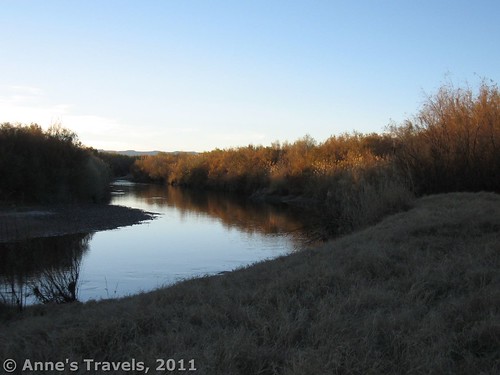


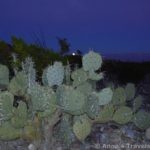
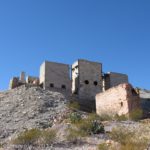
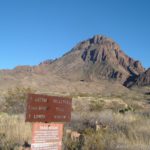
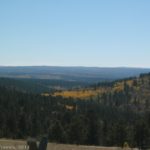
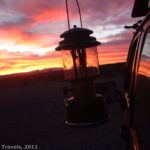
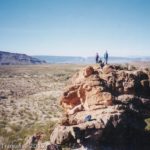
Pingback: Marufo Vega and Strawhouse Trail Loop, Big Bend
Pingback: The Best Hikes in Big Bend National Park
We tried to get Woodson’s last week, but found that it was lost in the last flood. NPS said it would not be rebuilt due to illegal activity.
Thanks so much for the info! I’ll update the post.
Pingback: Backcountry Car Camping in Big Bend pt 1 - Anne's Travels
Pingback: Backcountry Car Camping in Big Bend pt 3 - Anne's Travels